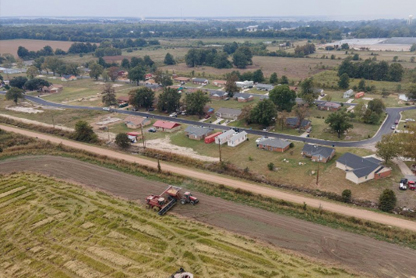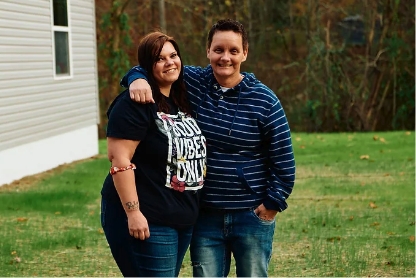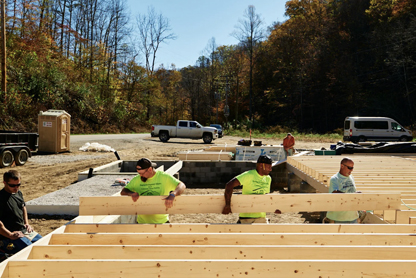Introduction and Executive Summary
INTRODUCTI0N
TAKING STOCK
Rural People, Rural Places, Rural Housing
In the early 1980s, the Housing Assistance Council (HAC) published its initial Taking Stock report. This seminal work was one of the first comprehensive assessments of rural housing and rural poverty conditions in the United States. The first Taking Stock also exposed the plight and housing need of the nation’s high poverty rural areas. HAC’s decennial Taking Stock analysis continued in 1990, 2000, and 2010 and has increasingly expanded to cover a broader scope of social, economic, and housing trends in rural areas. The 2023 edition of Taking Stock continues its legacy of presenting a composite picture of trends and issues important to rural people, places, and housing.
FOREWORD
TAKING STOCK – A GREAT RESOURCE … AGAIN
By Joe Belden
The Housing Assistance Council’s Taking Stock report, now in its fifth edition, is to me the premier study of rural poverty and housing in the United States. The report’s strength is in part that it has continued, having examined and updated rural data from every decennial Census and from other sources since 1980. Poverty in persistently poor rural regions and among certain high-need groups remains a challenging national problem that has been with us for many decades. For 40 years, HAC has done a great job in focusing on this challenge.
But my admiration for Taking Stock is biased, given that I was involved in a small way with the first report. In the fall of 1983, HAC hired me as a consultant to help with the research and writing that became Taking Stock. The job was supposed to be temporary. But apparently someone forgot to put me out with the recycling, and I stuck around at HAC, a wonderful organization.
Later in my HAC career, when visiting funders and government officials, other HAC staff and I would often see the HAC Taking Stock poverty map on an office wall. And many times I used the paper map in a presentation, pinned to a conference room wall with tape or thumb tacks. Very low tech, but always effective and dramatic. Congratulations to HAC on another great report.
Joe Belden is a writer and consultant based in Washington, D.C. He was a researcher and Deputy Director at HAC from the early 1980s until his retirement more than 30 years later.
PREFACE
5 Decades of Taking Stock in Rural America
We live in an information age. Rural America and the people working to improve rural communities and rural lives deserve the highest quality information and data to inform strategies and solutions. But data, information, and analyses on rural America are frequently lacking, negative, or presented by entities who are not adequately knowledgeable on rural dynamics.
The Housing Assistance Council is a thought leader for rural America. We at HAC are, and have always been, committed to providing the highest quality research, data, and information on rural issues and trends. This commitment was evidenced in the first Taking Stock report. That seminal report exposed the plight and housing need of the nation’s rural communities and high poverty areas. HAC’s decennial Taking Stock analysis continued in 1990, 2000, and 2010 and has increasingly expanded to cover a broader scope of social, economic, and housing trends in rural areas.
The 2023 edition of Taking Stock continues its legacy as the standard bearer of analysis on rural people, places, and housing. The fifth decade of Taking Stock presents interactive, digital, and new media resources but it retains the ethos and commitment of that typewritten wire-bound report of the early 1980s.
I hope you’ll join me in Taking Stock of the realities, struggles, and possibilities of rural America.

David Lipsetz
President & CEO
Housing Assistance Council
5 DECADES OF TAKING STOCK IN RURAL AMERICA
The first Taking Stock report was drafted with a typewriter and many of the charts and maps were hand created. Technological advances now allow us to analyze, present, and disseminate information in ways unimaginable 40 years ago. The printed report will remain a cornerstone, but the fifth decade report of Taking Stock incorporates interactive, digital, and new media resources that help illustrate the unique challenges and opportunities in rural America.
The Long View in Rural America
The fifth edition of Taking Stock presents special longitudinal data points and visualizations that addresses rural trends and their trajectories over the past five decades.
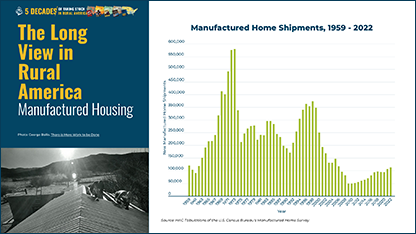
“Ruralities”
Want to learn more about a topic or issue presented in Taking Stock? Click on the Ruralities icon to find more detailed information on a wide range of social, demographic, economic, and housing issues affecting rural America.

RuralSTATs
Just the numbers! Look for these headings to get quick snapshots of the data presented in Taking Stock.

There is More Work to be Done
This special edition of Taking Stock features photography from the special photographic retrospective, There is More Work to be Done, an online exhibit celebrating the struggle for affordable homes and stronger communities in rural America, both past and present. Inspired by photographer and activist George “Elfie” Ballis (1925-2010), local photographers documented rural life and rural people. Situated alongside Ballis’s work, the new images celebrate progress in rural development while exposing the work that still needs to be done.
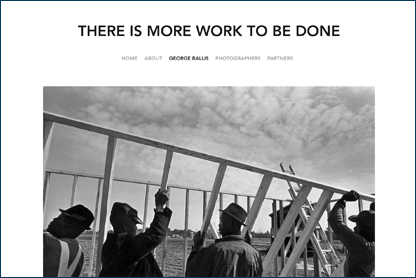
The Housing Assistance Council
October 2023
1025 Vermont Avenue, NW
Suite 606
Washington, DC 20005
202-842-8600
www.ruralhome.org
This research report was prepared by the Housing Assistance Council (HAC). HAC’s Research & Information Team served as the primary authors and production crew for this publication. The research team included Lance George, Keith Wiley, Manda LaPorte, Leslie Strauss, Natasha Moodie, and Christina Davila. Dan Stern managed the production process. David Lipsetz reviewed early drafts of the report and provided guidance and support. Amaya Beltran, Alfonso Cuesta, Soraia Filipa, and Luis Hernandez from Salta With Us provided design, creativity, and presentation for the report. Lance George was the Managing Editor for this edition of Taking Stock.
Financial support for this publication was provided in part by Wells Fargo Housing Foundation. HAC is solely responsible for the accuracy of the statements and interpretations contained in this report, and such interpretations do not necessarily reflect the views of funders or partners.
HAC is a national nonprofit corporation that helps build homes and communities across Rural America. For over 50 years, HAC has supported local efforts to improve rural housing conditions.
HAC is an equal opportunity employer and housing provider.
ABOUT THE AUTHORS
Lance George
Director of Research and Information
Lance is the Director of Research and Information at the Housing Assistance Council. With more than 20 years of experience, Lance leads the organization’s research, data, and information efforts. Lance works at the intersection of housing, research, and data to help Americans who have quality and safe homes, understand, care, and act for those who do not.

Christina Davila
Research Associate
Christina Davila is a Research Associate at the Housing Assistance Council. She collects perspectives from experts in the field and on the Hill about broadband, capacity building, fair housing, and housing finance.

Manda LaPorte
Research Associate
Manda LaPorte is a Research Associate at the Housing Assistance Council. Her areas of interest include farmworker housing, placemaking and community development, and rural housing policy.

Natasha Moodie
Research Associate
Natasha Moodie is a Research Associate at the Housing Assistance Council. Natasha’s current research projects focus on affordable housing for residents in recovery from substance use disorders and heirs’ property, land tenure, and the racial wealth gap.

Leslie Strauss
Senior Policy Analyst
Leslie Strauss has worked at the Housing Assistance Council since 1991. After serving in other positions over the years, currently she is a Senior Policy Analyst, responsible for a variety of policy and information activities. She has a law degree and practiced real estate law for several years before joining HAC.

Dan Stern
Communications and Outreach Manager
Dan Stern is HAC’s Communication and Outreach Manager. His responsibilities include managing and updating HAC’s website and communications, coordinating HAC’s outreach initiatives, and is a member of HAC’s Tech Team.

Keith Wiley
Senior Research Associate
Keith is HAC’s Senior Researcher and data guru. Keith has worked extensively with many datasets in an effort to better understand where, when, and how development patterns occur.

TAKING STOCK 2020


